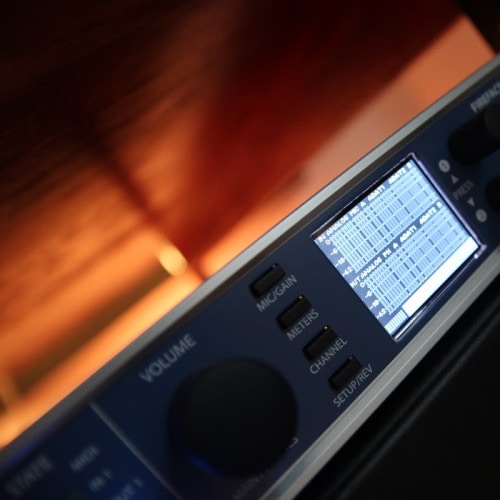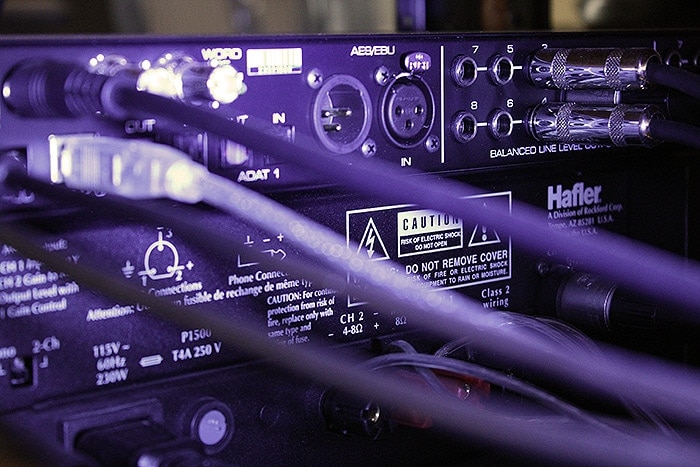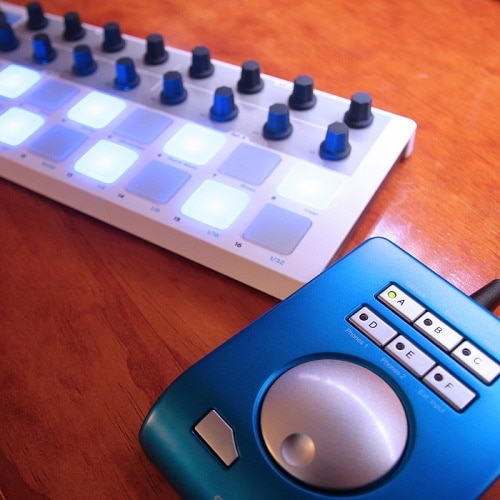So, you’re a producer or recording artist. After a while, you decide your sound quality isn’t up to par or you’re just not happy with the final takes. You convince yourself you need a new microphone. Maybe it’s time to switch to a different DAW. Or perhaps it’s time to shell out $3000 for a shiny, new workstation keyboard…

If you have a fairly capable computer and recording software, you already have the essential pieces to make professional music. Beyond that, many home studio enthusiasts just starting out want to know what equipment will give them the highest quality results.
When I first started recording music in a basement garage, I invested in a few good keyboards, a reasonably priced but solid microphone and a low cost audio interface. I also had a pair of capable studio monitors. I still own and use this same equipment with the exception of the audio interface.
Actually, there is nothing I’ve swapped out more in my home studio than the interface. I’m thinking I had been through half a dozen of them.
Vocal recordings sounded too thin. My instruments were producing noise. Driver issues that kept crashing my DAW. Headphone monitoring that was too quiet. Midi Delay. I could go on and on and on…
What I failed to realize is quite obvious. The Audio Interface is the absolute CENTERPIECE of my home studio.
I use it’s preamps to record my microphones. It records all audio coming from any of my external keyboards and instruments. Every bit of audio I monitor goes through this box, either out of my monitors or headphones. It controls and triggers my instruments via midi and I rely on it’s timing to stay in sync. Lastly, it is the central hub that works together with my DAW. If they’re not working and communicating well together, my sessions are a disaster.

So why did I continuously slack on this investment? I believe I was miseducated. Let’s face it. The audio interface isn’t the most exciting piece of gear. Mine sits in the lower rack of my desk, where it can barely be seen. It’s less exciting than a new microphone or keyboard with all the latest bells and whistles. Yet, ironically everything will only be able to sound and perform up to the level of your Audio Interface.
Now, let’s get super geeky for a moment so we can really understand a key role the Audio Interface plays. I’m sure most of you have heard of AD/DA Conversion (Analog to Digital, Digital to Analog). What this refers to is the process that your interface actually converts audio signals from analog to a signal understood by your computer or digitally controlled devices. So why is this so important? It is because as most of us work in the computer environment, we’re relying on the audio interface to accurately and precisely produce the sounds we’re hearing. On a practical level, if the conversion isn’t done properly, it affects the way we monitor audio, ultimately altering the quality of our mixes, recordings, etc.

Look, I’m not saying you can’t achieve great results with a budget audio interface because you CAN. However, I hear from producers and artists constantly that are not happy with their audio quality. They’ve invested thousands into microphones, monitors, keyboards, etc. and are using a $200 audio interface.
In my experience, no other investment in my studio has made a bigger difference in my recordings, monitoring and workflow than the audio interface. If you plan on investing or upgrading in your own home studio, don’t forget about that little box that EVERY bit of audio in your studio goes through!

Great post Sean! Totally agree here. To the point where I couldn’t get use to certain DACs when trying to switch my interface and refused to use room EQ. I’m so used to my monitor chain that it would be hard to switch and I have good but nowhere near top of the line gear. Really appreciate the insight and advice.
For sure man. I think It’s really important to get gear your comfortable with and stick with it over a long period, especially anything in the monitoring chain!
Heyo! Could you give me your top 5 professional Audio Interfaces for intermediate producers on a 1k to $1500 budget. And also, what is your dream audio interface that you would personally buy if money wasn’t an issue?
Hey Chase. I would check out the RME UCX or the Universal Audio Apollo Twin. You really can’t go wrong with either of them, although you’ll get more I/O and midi with the RME. I honestly wouldn’t trade my UFX for anything, it’s everything I need and more.
Hello sean. Between RME UFX and Behringer x32 which would you advice for studio? Thanks
Hi;
My name is David Hoyte.
I am a Songwriter, Composer.
I am Interested in a very nice Studio Interface for Recording Music and Vocals with Head Phones Monitor.
How can you ship one to the Bahamas,
And how much.
Thanking you in advance.
Hello Sean. I’m currently in the market for a new interface. I recently purchased a new custom spec Alienware M15 thin and light laptop. It has both thunderbolt 2 and 3 connections as well as USB 3.0 so IO is no issue. I’m running windows 10 pro on that workstation so my current profire 610 interface isn’t supported. Additionally, I’ve had to endure dropouts for years and trying to run a session at sample rates higher than 48k is impossible. Non stop cracking! I’m eyeing the new Apollo x6 interface but was also advised to consider some of the RME offerings. I was eyeing the RME fireface802 or the ADI-2 pro. I have looked into antelope audio but they’re still developing their Windows 10 drivers. I don’t really do any recording. I primarily make urban rap trap / r&b beats and obviously do some mixing. I’m expanding into acoustic and experimental music as well. Should I be trying to take advantage of UAD’s thunderbolt 3 connectivity or is the USB 2.0 connection on the RME units sufficient enough to carry me for the next 5 to 10 years? I was wondering if you could offer some much needed perspective on the matter.
Hi Larry, I would highly recommend RME interfaces. I was previously a PC user and like you, had consistent driver issues, pops and clicks until I went with an RME interface. Their drivers and support are rock solid. The UA line is great quality but IMHO their business model is heavily geared towards getting you to use their plugins which ultimately turns your interface into a big license dongle (you can’t use the plugins without it). I’ve recently tried the ADI-2 Pro and it’s fantastic – amazing converters but you may want to consider the 802 or UFX+ if you need more I/O.